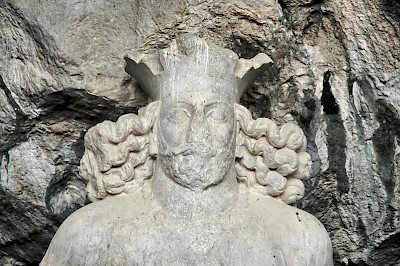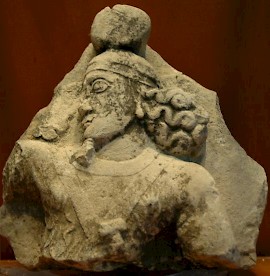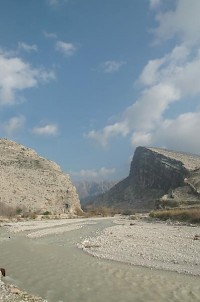Bishapur
Q477898Bishapur: important Sasanian city in Iran, founded by king Shapur I, and built by Roman POWs.

Bishapur, "the beautiful [city] of Shapur", is situated south of modern Faliyan, just off the ancient road between Persis and Elam, which connected the Sasanian capitals Istakhr (close to Persepolis) and Firuzabad to Susa and Ctesiphon. The city was built near a river crossing.
As the name indicates, the city was founded by King Shapur (r.241-272). Like the bridge at Shushtar, it was built by Roman soldiers who had been captured after the defeat of the Roman emperor Valerian in 260. Perhaps, they belonged to the Sixth Legion Ferrata, because this unit disappears from our sources after Valerian's defeat.

Many aspects of Bishapur's architecture look Roman and do not belong to Iranian building traditions. An example is what specialists call the "Hippodamian Plan", which means that the city looks like a gridiron, while Iranian cities usually were circular in design. Bishapur was not a completely novel settlement: archaeologists have found remains from the Elamite and Parthian ages.

The core of the city was the old castle, situated on a steep rock, which is in itself one of the most interesting geological features of the southern Zagros. The oldest monument was relief I, in the Tang-e Chowgan gorge, which celebrates one of Shapur's earliest victories. Reliefs II and III commemorate the defeat of Valerian. Probably, the small relief VII did the same.
While these were cut, the city, palace, and the so-called Temple of Anahita were built by the Roman POWs. Another monument from the founding period is the cave monument.
The city, surrounded by walls that may have stood some ten meters high, was inhabited by some 50,000 to 80,000 people. Later monuments include reliefs V (investiture of Bahram I), IV (an Arab embassy to Bahram II), and VI (victory of Shapur II).
Bishapur remained an important city until the Arab invasions and the rise of Islam in the second quarter of the seventh century. It became a center of Islamic learning (a madrassah has been excavated) and there were still people living over here in the tenth century, but the decline had started in the seventh century.
The main monuments have been excavated between 1935 and 1941. Nevertheless, most of the city is still buried, and incidentally, teams of archaeologists returned to the site (e.g., in 2009). Perhaps they will focus on the living quarters of the ordinary people of Bishapur. There is a small museum.